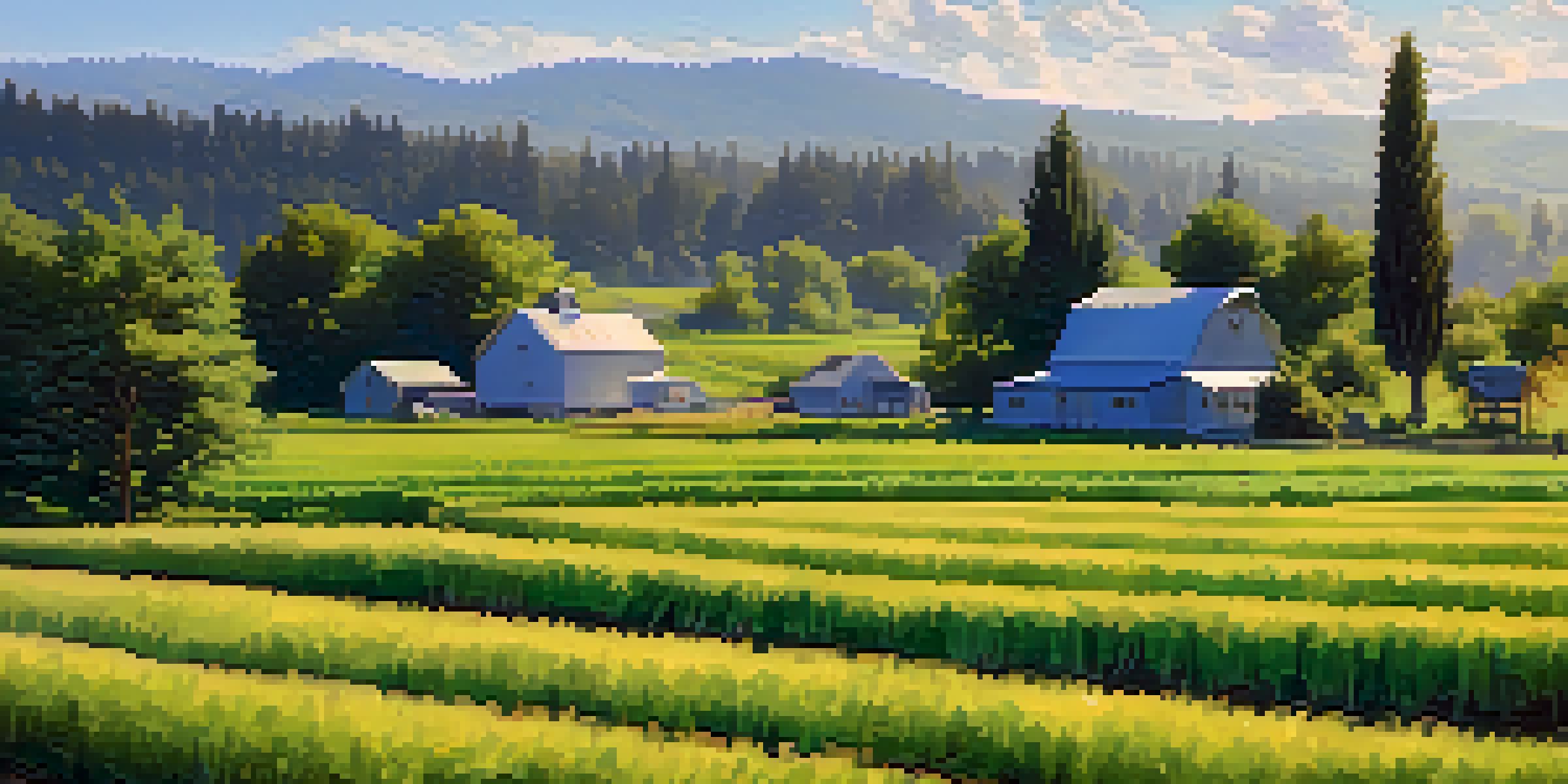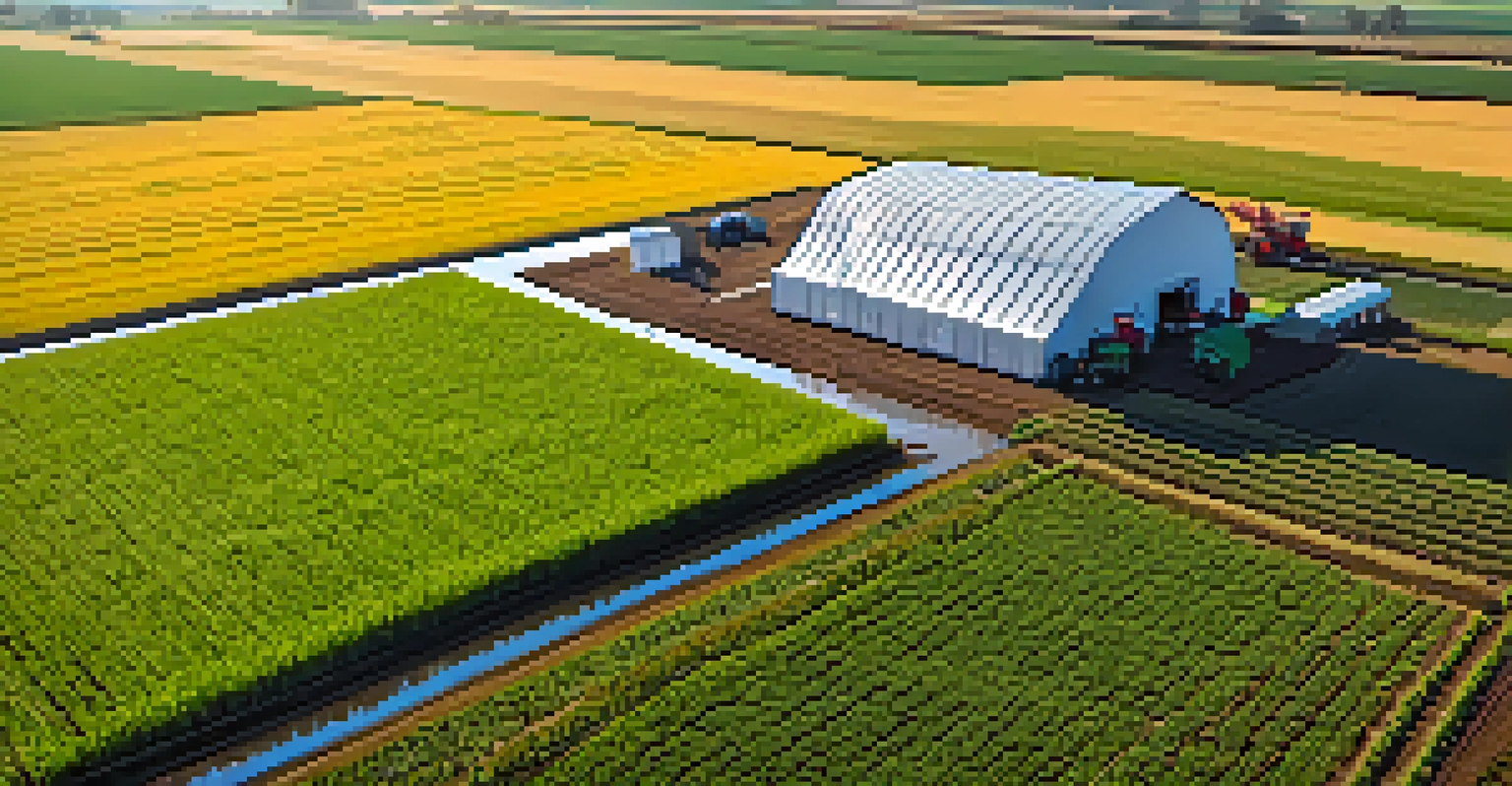Climate Change and Its Implications for WA's Agriculture

Understanding Climate Change: A Brief Overview
Climate change refers to the long-term alteration of temperature and typical weather patterns in a place. For Washington State, this means a shift in precipitation patterns, increased temperatures, and more extreme weather events. The implications are significant, especially for the agricultural sector that heavily relies on stable climate conditions for crop production.
Climate change is not just a problem for the future; it’s a reality that farmers are facing today, impacting everything from crop yields to water availability.
In Washington, farmers are already experiencing changes in growing seasons, with warmer temperatures leading to earlier springs and longer summers. This can disrupt traditional planting and harvesting schedules, posing challenges to crop yields and quality. Understanding these patterns is vital for farmers to adapt and thrive in an uncertain climate.
Moreover, climate change is not just about hotter temperatures; it also brings about unpredictable weather events. Increased rainfall and droughts can both occur, complicating water management for irrigation. This unpredictability makes planning for the future increasingly complex for agricultural producers.
Impact on Crop Yields: What Farmers Are Facing
One of the most immediate concerns for farmers in Washington is the impact of climate change on crop yields. Warmer temperatures can benefit some crops, but others may struggle to adapt, resulting in lower yields. For instance, crops like wheat and grapes may benefit from longer growing seasons, while others may face stress from heat and pests.

In addition, changing precipitation patterns can lead to either drought or flooding, both of which can devastate crops. For example, excessive rain can lead to root rot in crops, while drought can stress plants, leading to poor growth and reduced harvests. This variability requires farmers to be more proactive in their crop management strategies.
Climate Change Disrupts Agriculture
Farmers in Washington face significant challenges due to changing weather patterns, impacting crop yields and management.
Farmers are increasingly looking for resilient crop varieties that can withstand these changes. Research into drought-resistant and heat-tolerant varieties is crucial for ensuring food security in the face of climate challenges. However, the transition to new crop types requires time, investment, and education.
Water Resources: A Growing Concern for Agriculture
Water is the lifeblood of agriculture, and climate change poses significant challenges to water resources in Washington State. Changes in precipitation patterns can lead to periods of both excess rainfall and severe drought, complicating irrigation practices. Farmers must adapt to these changing conditions to maintain crop health and productivity.
The future of agriculture hinges on our ability to adapt and innovate in the face of climate change.
The melting of snowpack in the mountains, which traditionally provides a reliable water source during the dry summer months, is also a concern. With shorter winters and less snowfall, farmers may face water shortages just when they need it most. This necessitates innovative water management strategies to ensure that crops receive adequate irrigation.
Conservation practices, such as rainwater harvesting and improved irrigation techniques, are becoming increasingly important. By adopting these methods, farmers can better manage their water resources and reduce dependence on traditional sources. This is not just about adapting to current conditions; it’s about preparing for a future where water may be even more scarce.
Pests and Diseases: A Changing Landscape
As temperatures rise, the agricultural landscape in Washington is also changing regarding pests and diseases. Warmer conditions can lead to increased pest populations, which pose a significant threat to crops. Farmers must be vigilant in monitoring and managing these pests to protect their yields.
Additionally, some pests that were previously limited by colder temperatures may now thrive in Washington's changing climate. This shift can lead to the introduction of new diseases that can devastate crops. For instance, the spread of pests like the brown marmorated stink bug can affect various crops, leading to increased pesticide use and costs for farmers.
Water Scarcity Affects Crop Health
Shifts in precipitation and melting snowpack complicate irrigation, making effective water management crucial for farming.
Integrated pest management strategies are vital in combating these challenges. By employing a combination of biological control, habitat manipulation, and careful monitoring, farmers can create a balanced ecosystem that minimizes the impact of pests and diseases while reducing reliance on chemical treatments.
Economic Implications: The Financial Toll on Farmers
The economic implications of climate change for Washington’s agriculture are profound. Farmers may face increasing costs associated with adapting to new conditions, whether through investing in resilient crop varieties, improved irrigation systems, or pest management strategies. These costs can strain already tight budgets, especially for small-scale farmers.
Moreover, fluctuations in crop yields due to unpredictable weather can lead to financial instability. When harvests are poor, farmers may struggle to cover their operating costs, leading to potential debt and financial hardship. This uncertainty makes it difficult for farmers to plan for the future and invest in long-term sustainability.
As a response, some farmers are exploring diversification of their crops and income sources. By growing a variety of crops or incorporating agritourism and other ventures, they can create additional revenue streams. This strategy not only helps mitigate financial risks but also encourages a more sustainable agricultural system.
Policy Responses: What Is Being Done?
In response to the challenges posed by climate change, various policies and initiatives are being implemented to support Washington's agriculture. State and federal governments are funding research into climate-resilient crops and sustainable farming practices. These efforts aim to equip farmers with the tools they need to adapt to changing conditions.
Additionally, programs that promote sustainable water management and conservation practices are gaining traction. These initiatives help farmers to use water more efficiently and reduce their environmental impact. By encouraging responsible practices, these policies contribute to the long-term viability of agriculture in the face of climate change.
Technology Aids Farming Adaptation
Innovative tools like precision agriculture and smart irrigation systems are helping farmers respond proactively to climate challenges.
Collaboration among stakeholders, including farmers, researchers, and policymakers, is essential for effective climate adaptation strategies. By working together, they can share knowledge and resources, fostering innovation and resilience within the agricultural sector. This collective approach is crucial for navigating the uncertain future of farming in Washington.
The Role of Technology in Adapting to Climate Change
Technology is playing an increasingly vital role in helping farmers adapt to the realities of climate change. From precision agriculture tools that optimize resource use to advanced weather forecasting systems, technology offers innovative solutions for modern farming challenges. These tools help farmers make informed decisions that can enhance productivity and sustainability.
For instance, satellite imagery and drones can provide real-time data on crop health, allowing farmers to identify issues early and respond appropriately. This proactive approach can lead to better yields and reduced waste, ultimately benefiting both farmers and consumers. Embracing technology is not just about keeping up; it’s about staying ahead in a rapidly changing environment.

Furthermore, technology can facilitate better water management practices. Smart irrigation systems equipped with sensors can monitor soil moisture levels and adjust watering schedules accordingly. This efficiency not only conserves water but also ensures that crops receive the right amount of hydration, contributing to healthier harvests.